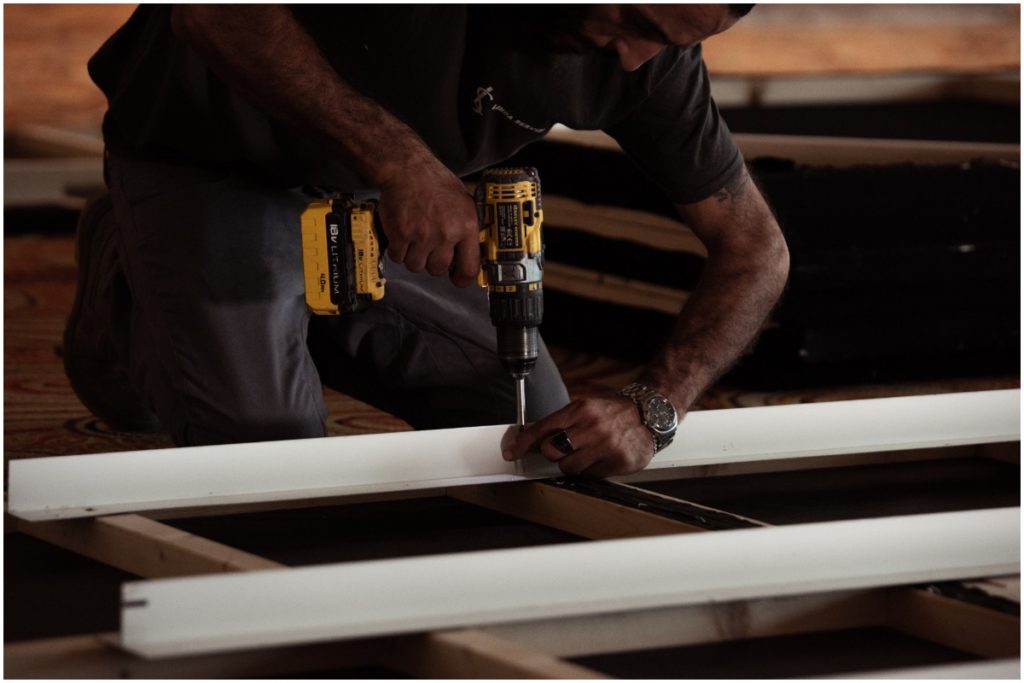
Every homeowner needs a well-stocked toolbox. Whether you live in a modern apartment in downtown Philadelphia, a historic home in Boston, or you’re looking to put your house on the market, you will inevitably need to make home repairs – and you’ll need the tools to do it. It’s also always helpful to have what you need to put furniture together, tighten the wheel of your child’s bike, or spend time on your woodworking hobby. To help you create a functional set of supplies, we’ve put together this list essential tools for DIY home projects and repairs.
What to Consider Before Buying Your Tools
Thinking about your set of tools as an investment can help you decide how much to spend, and which items to buy first. Tools don’t have planned obsolescence, so do a little research and select a well-made item that is built to last many years. Be sure to also check for warranties, as many brands offer a lifetime warranty on hand tools.
It’s better to invest in higher quality tools individually than an inexpensive, complete tool kit. You get what you pay for, and cheaply made tools can break, which can derail a project or cause injury. That being said, think about the kind of projects you’ll be doing the most. If you don’t plan to use your hammer for more than hanging pictures, then you may not need to invest in a top-of-the-line piece.
Remember that you probably won’t create your set all at once. If you’re planning this as a long-term investment – and you should – then consider asking for specific tools for your birthday, Christmas, or other special occasions. Make sure to be very specific about the brand and model you’d like, or you might just get a cheap knock-off and you don’t want that.
Renovating your home?
Find out what your home's worth, edit facts, and see the impact of home projects.
Must-Have Tools to Get Started
Renovating your home?
Every toolbox needs the basics. These are the foundation for your collection and should be able to get you through most standard DIY projects.
1. Safety Equipment
Before starting any activity, be sure to have the proper safety gear. At a minimum, this can include safety glasses, hearing protection, a dust mask, work gloves, and work boots.
2. Claw Hammer
This is the most basic tool, and you’ll be surprised how often you’ll reach for it. A claw hammer can be used for everything from hanging picture frames to minor demolition. A good hammer is solid and well-balanced. Consider buying a synthetic handle rather than wood. Even a well-made wood handle can break, and the more you use a synthetic hammer, the more you’ll appreciate the cushioned grip. A 16-ounce hammer is heavy enough for most projects but light enough to carry around easily.
3. Vise-Grip Pliers
This versatile tool can be used as pliers, an adjustable wrench, a pipe wrench, wire cutters, a clamp, or a ratchet. The handles can lock in place and disengage with either a one-handed or two-handed unlocking mechanism. If it’s just you and your two hands, the one-handed version is a great option. The standard 5-10WR pliers should be sufficient for most projects. Check for those with a padded grip. You’ll thank yourself later.
4. Needle Nose Pliers
These are especially good if you need to reach a tight spot or if you’re doing electrical work. You can also use these to tighten wires or access those hard-to-reach places in your engine.
5. Cordless Power Drill
You’ll want to invest in one with a comfortable grip and plenty of power. A good cordless drill can drill holes in sheetrock and apply screws through a 2×4. You can also hang curtains, heavier picture frames, and the like. Keep in mind that more power = more weight – the largest 18V drill weighs about 10 pounds. Unless you absolutely need that kind of torque, stick with the 12V size. It’s strong enough for most DIY projects and won’t wear out your wrists. Look for a drill with multiple speeds and one that is reversible, either to correct your mistakes or remove screws.
6. Screwdrivers
You’ll want both Phillips head, with the cross end, and flathead screwdrivers. If you can find a set that has different sizes, it will make most jobs easier. The Phillips head screws allow a tighter, more solid connection, although you’ll probably run across both types of screws in your projects.
7. Tape Measure
The old saying goes, measure twice, cut once. A heavy-duty tape measure is necessary for doing most DIY tasks accurately. Choose a retractable one with a “foot” grip, at least 25 feet in length.
8. Utility Knife
These are also known as box cutters, but you can do much more with a high quality one, such as making precision cuts or scoring your wood or pipe before sawing. Choose a utility knife with a smooth sliding retractable blade and one that allows replacement of the blades. A cheaper knife may not, and in this case, it’s better to have one that is durable as opposed to lightweight.
9. Level
Aligning cabinets, installing shelving, or even putting in a mantelpiece all require a level. The laser ones are nice, but a 9-inch torpedo level with the little bubble inside will be useful for everything from hanging a family picture to balancing a clothes dryer. Look for one with multiple bubbles – right slant, center, and left slant.
10. Electronic Stud Finder
To go along with your level, be sure to buy an electronic stud finder. Using this device is the easiest, most precise way to find a stud in a wall while hanging photos or mounting a TV.
11. Crescent Wrench
Adjustable crescent wrenches have jaws that can tighten and loosen to fit snugly against whatever you’re working with. While you may eventually invest in a socket wrench set, this is a great all-around tool to get you started.
12. Stiff Blade Putty Knife
This versatile tool can do everything from applying wall patching compounds to scraping loose paint off.

Essential Tools for More Advanced Repairs
If you’re planning on tackling more complex tasks, such as a woodworking project or remodeling a bathroom, you’ll need more specialized tools.
13. Combination Square
Combination squares are used in a variety of woodworking, masonry, and metalworking projects. The tool is used to measure 45° or 90° angles for carpentry, framing, or other similar tasks. The built-in spirit level can be used for level checking. You can also use the square to check flatness and depth, and the scriber can mark outlines for cutting or other operations.
14. C-Clamps
C-clamps are the go-to clamp for a variety of projects. They are also relatively cheap and widely available. You can use C-clamps for basic tasks like for gluing, nailing, or holding two materials in place, usually wood or metal.
15. Random Orbital Sander
This, versus the traditional belt sander, gives you a more polished, smoother overall finish for wood projects. The electrical motor powers a counterweight shaft that wiggles around in random directions and avoids scratching across the grain. There are a variety of disposable sandpaper disks available – from coarse disks to remove old paint or polish, to fine disks to finish your work.
16. Circular Hand Saw
A circular saw is a must-have power tool if you’re looking to make quick, straight cuts on a variety of materials. Having a circular saw is extremely helpful for home projects like adding a deck, replacing windows, or building shelves.
Looking to save money on your mortgage?
Organizing Your Toolbox for Safety and Convenience
Take some time to properly plan your personalized setup. Make sure to contain anything with a sharp edge, from your utility knife to your screwdriver set, to avoid poking or cutting yourself while you’re rifling through your tools. Instead of a bag, where everything gets jumbled tougher, choose a sturdy toolbox with different dividers so you can quickly find the tools you need. When you include nails and other hardware, make sure that your toolbox has deep wells to keep these contained. Ultimately, organize your tool kit based on how you’ll use it best, placing your supplies in a spot where you can easily find them when you need them.

























 United States
United States Canada
Canada